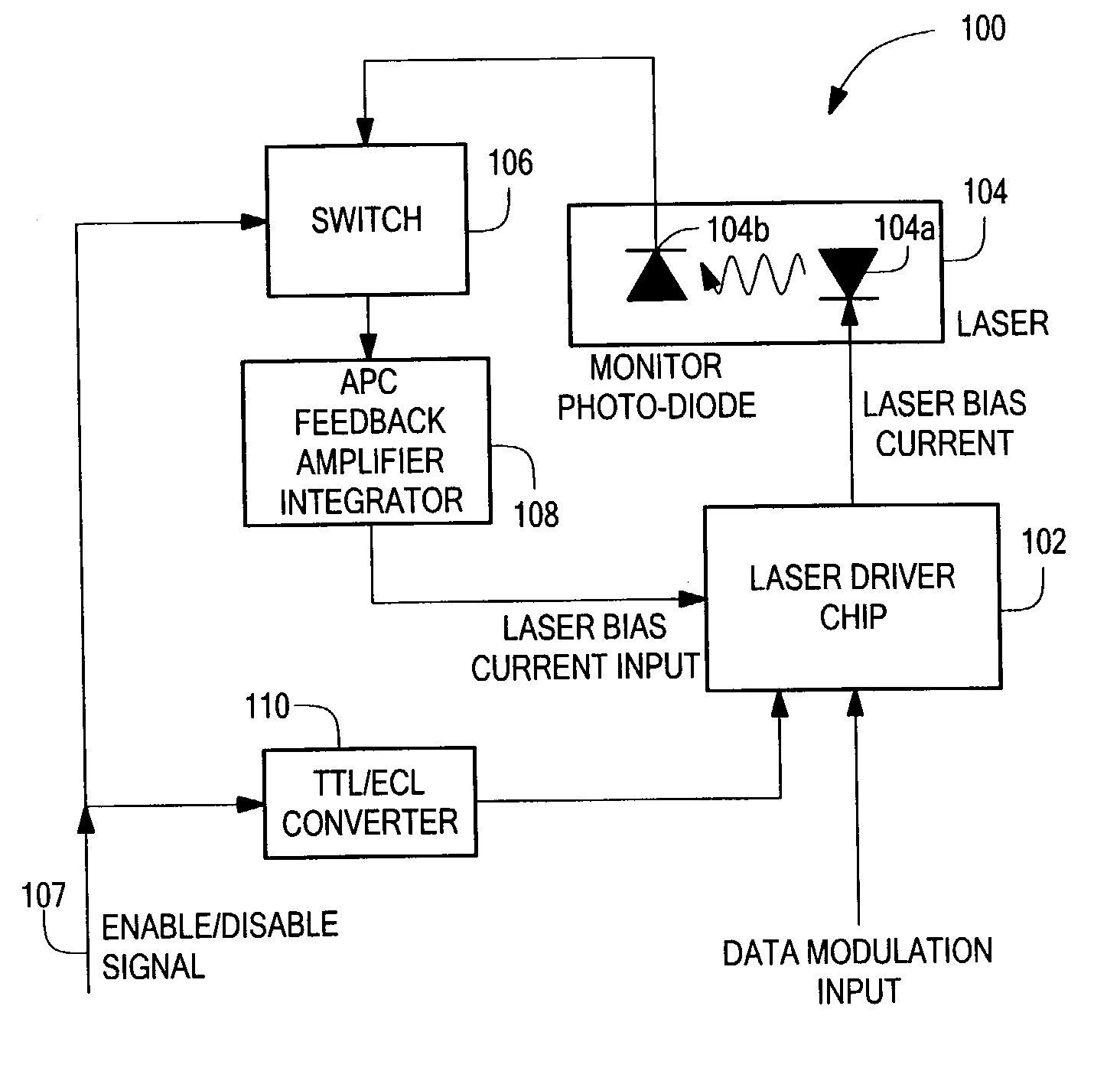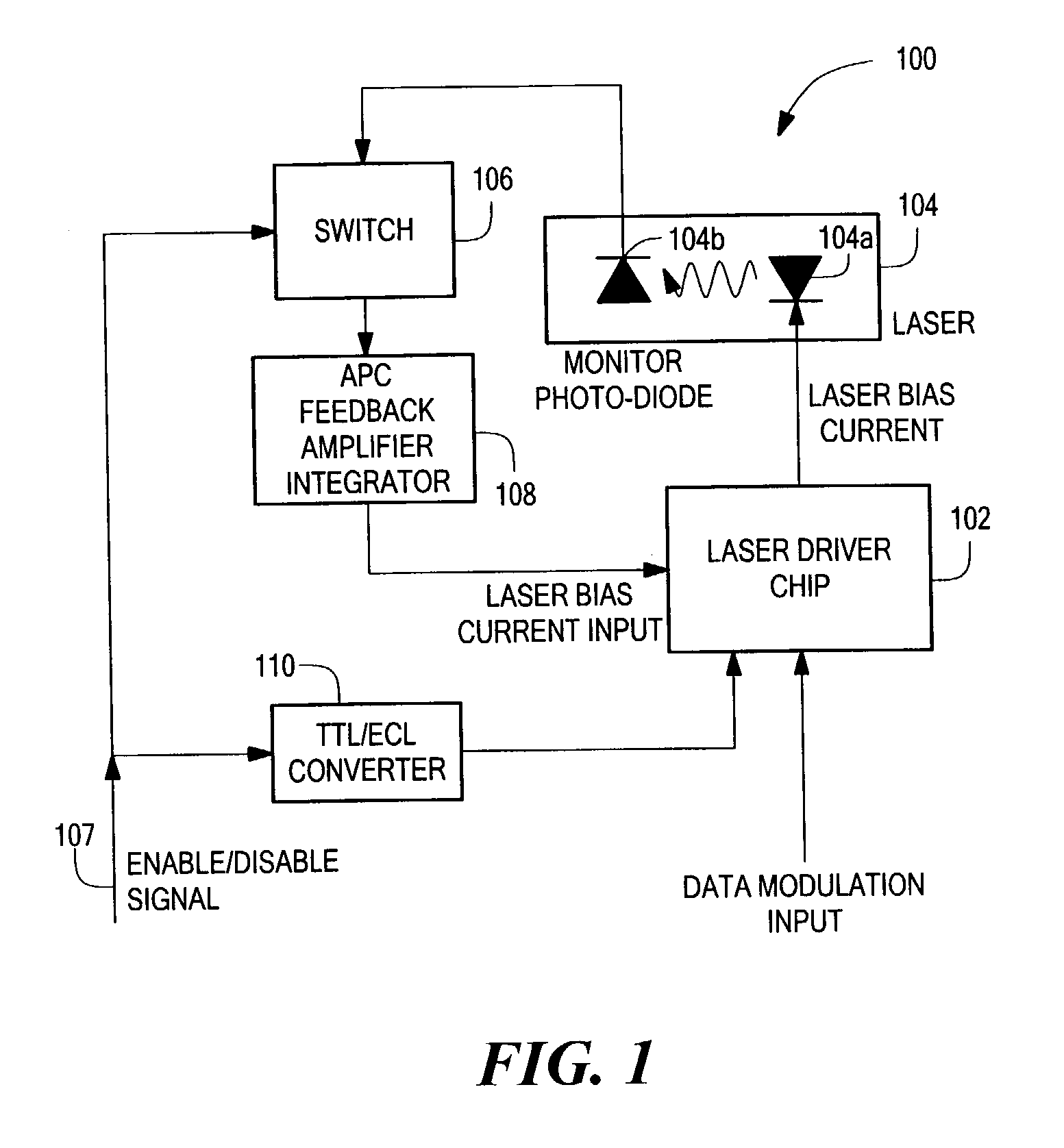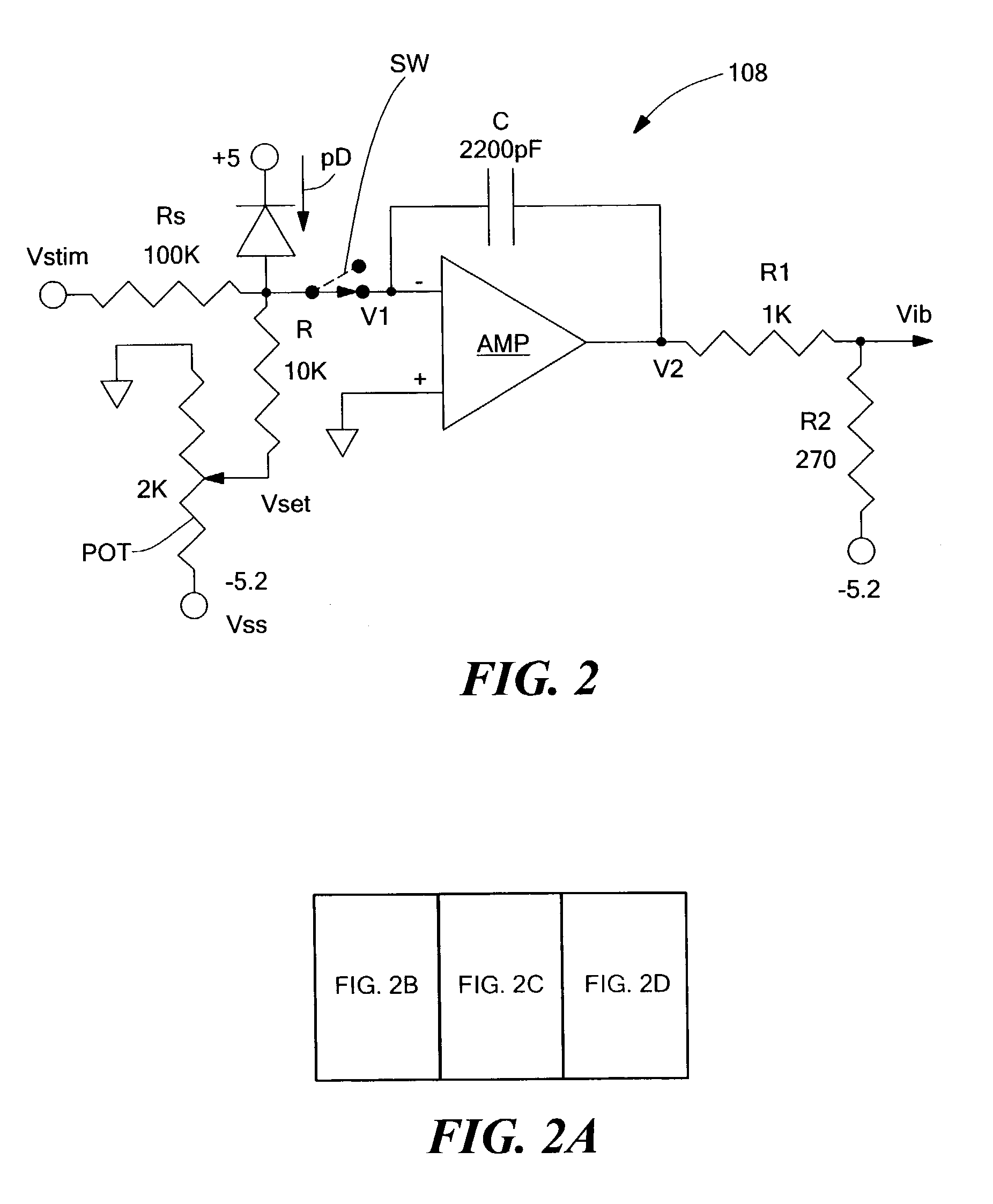System for regulating optical output power
a technology of optical output power and control system, applied in the field of optical communication, can solve the problems of cost and speed requirements that require direct control of laser diode current, the cost, package size, and power consumption required by temperature stabilization preclude its use, and the long-term average optical power monitoring may no longer be suitable for regulating bias current. , the effect of power consumption
- Summary
- Abstract
- Description
- Claims
- Application Information
AI Technical Summary
Benefits of technology
Problems solved by technology
Method used
Image
Examples
Embodiment Construction
[0038]In general, the invention provides a circuit for regulating the average optical output power during a burst from a semiconductor laser, in which a data-modulated envelope is turned on and off in an asynchronous manner during burst-mode operation.
[0039]The inventive burst-mode APC system uses an externally available signal that follows the timing of the burst-mode data envelope as a gating signal. This gating signal quickly turns the laser driver chip completely ON or OFF, and maintains the previous feedback signal during OFF intervals when the optical monitor no longer provides an output.
[0040]FIG. 1 shows a system 100 having burst-mode APC functionality in accordance with the present invention. A laser / driver chip 102 provides a laser bias current to a laser chip 104 having a laser diode 104a and a photodiode 104b for monitoring optical power. The photodiode 104b provides a signal to a switch 106 that receives an enable / disable signal and provides an output to an APC / feedback...
PUM
 Login to View More
Login to View More Abstract
Description
Claims
Application Information
 Login to View More
Login to View More - R&D
- Intellectual Property
- Life Sciences
- Materials
- Tech Scout
- Unparalleled Data Quality
- Higher Quality Content
- 60% Fewer Hallucinations
Browse by: Latest US Patents, China's latest patents, Technical Efficacy Thesaurus, Application Domain, Technology Topic, Popular Technical Reports.
© 2025 PatSnap. All rights reserved.Legal|Privacy policy|Modern Slavery Act Transparency Statement|Sitemap|About US| Contact US: help@patsnap.com



